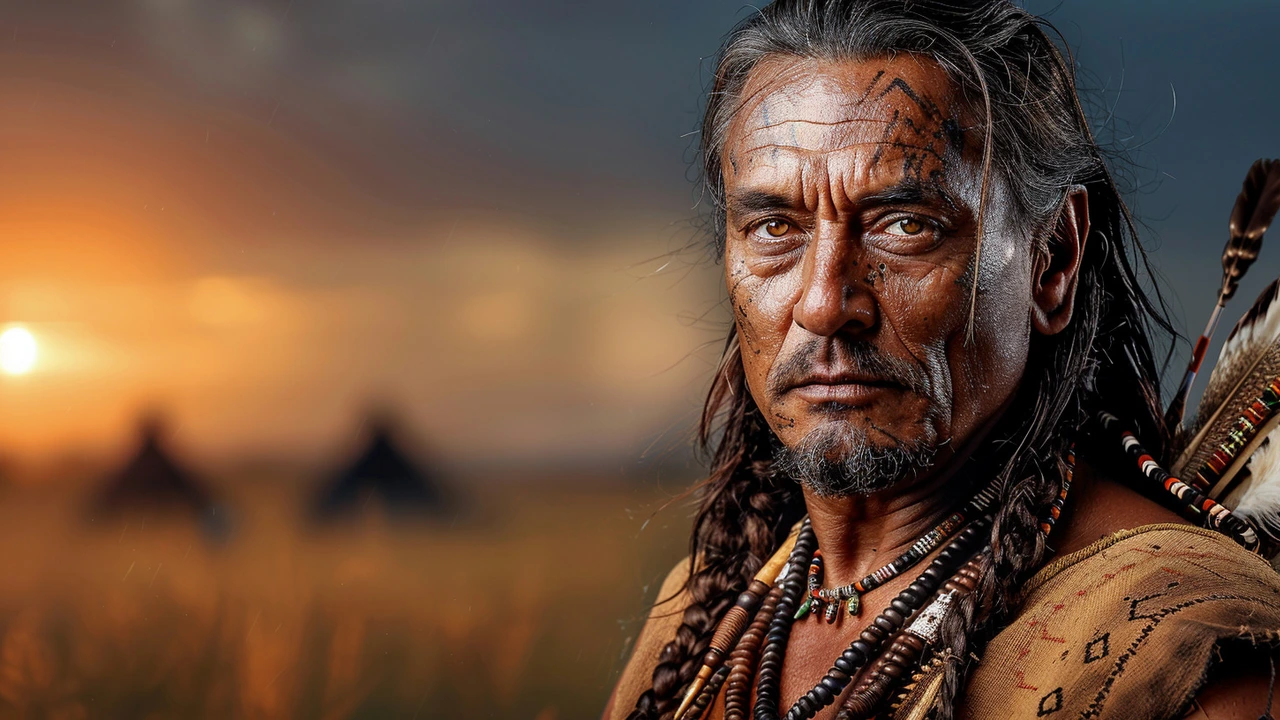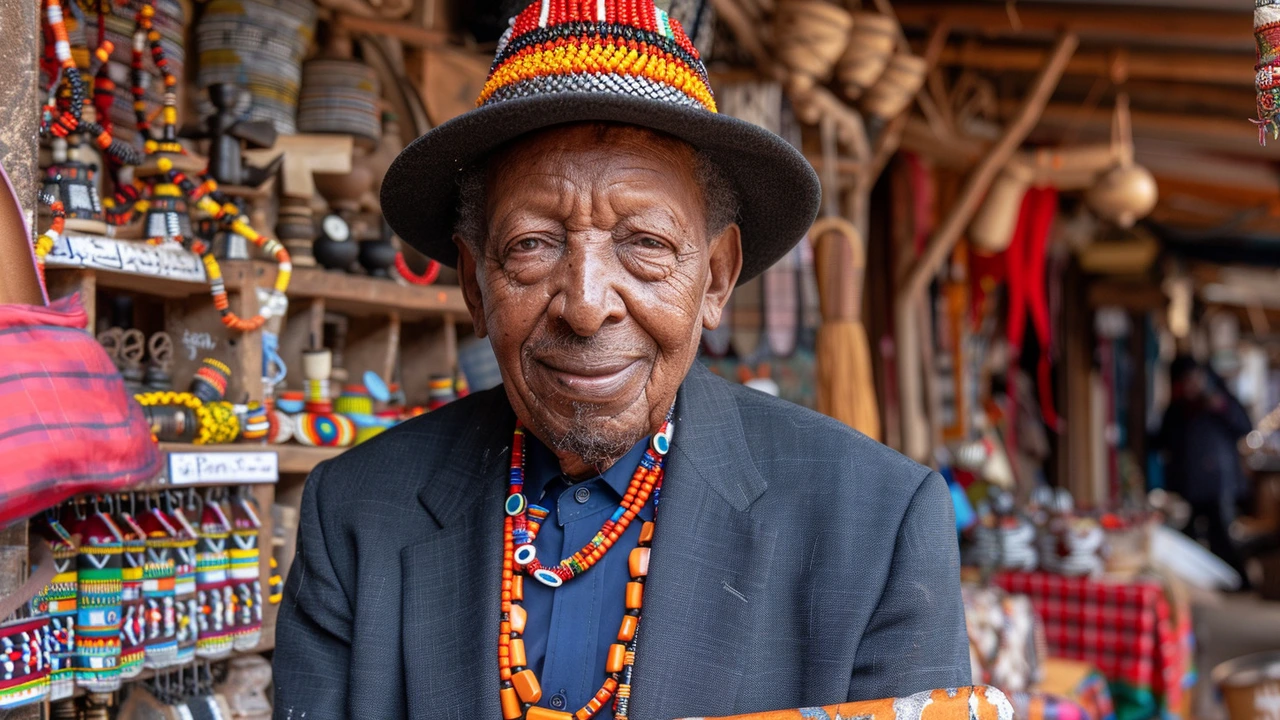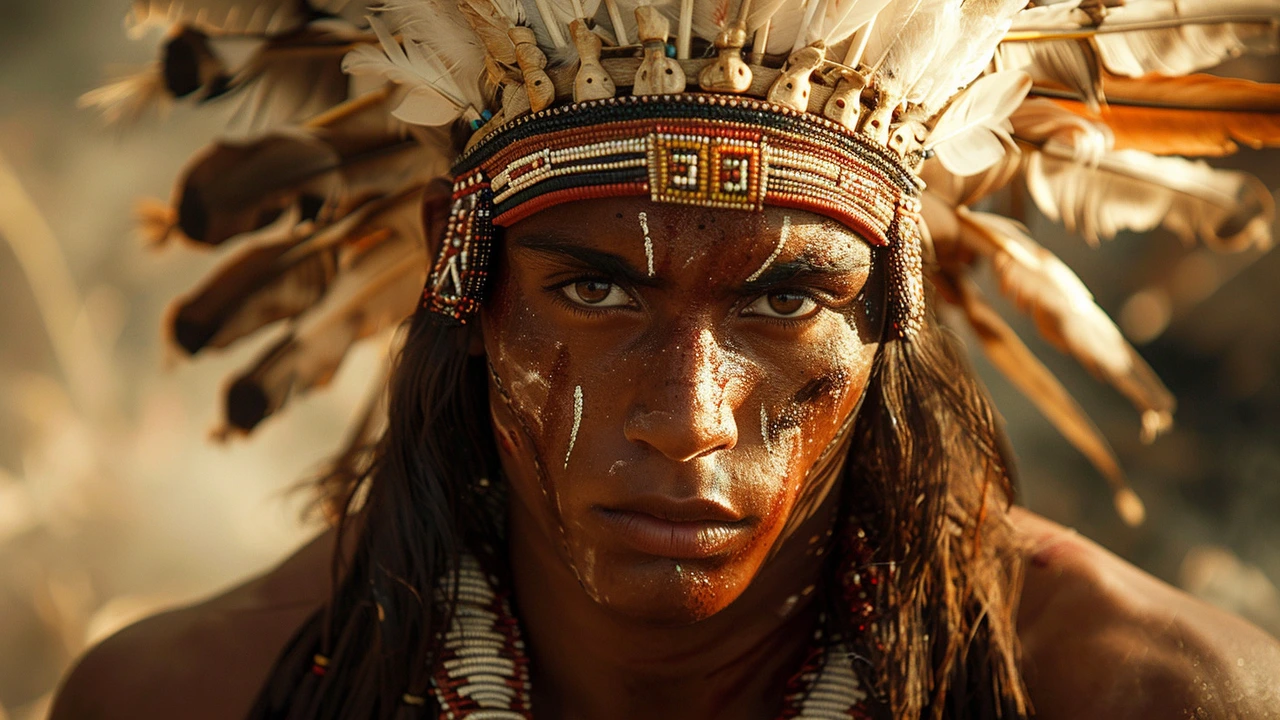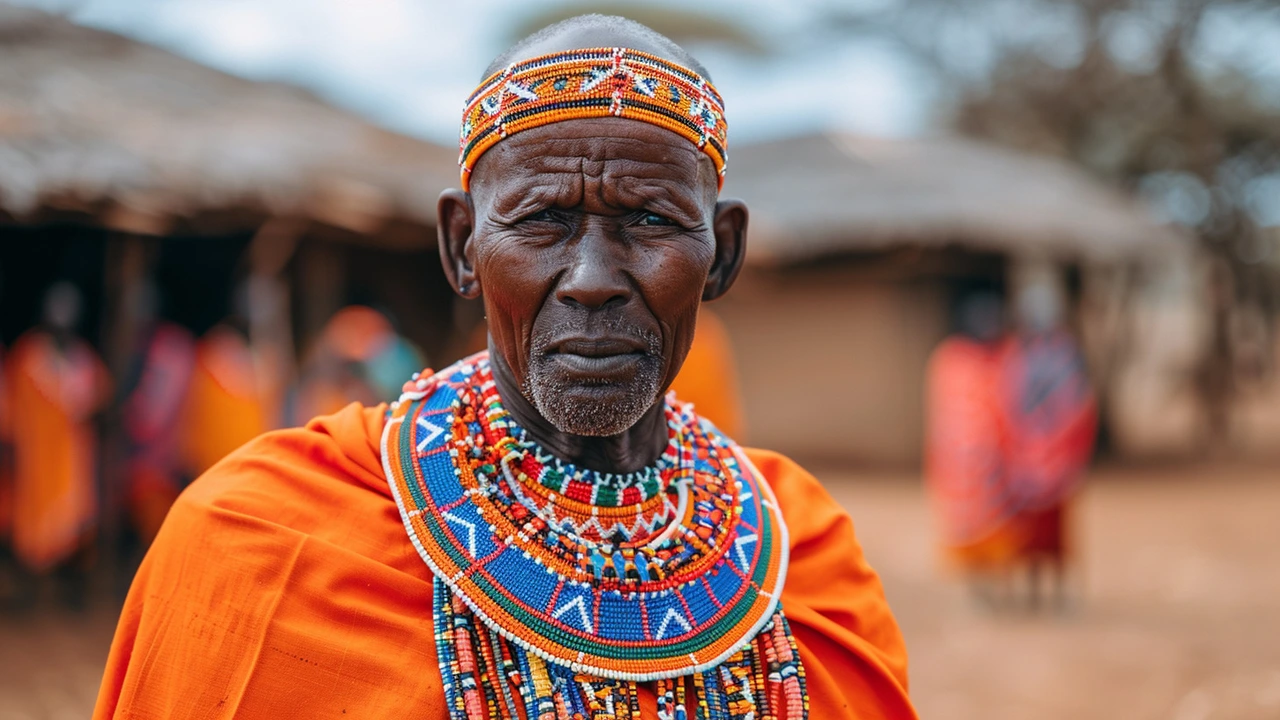The Rungu is much more than just a weapon; it is a potent symbol of leadership and authority among many African tribes. Historically, the Rungu has been used by tribal chiefs and elders to signify their position and command respect within their communities.
This wooden club, often elaborately decorated, carries a deep cultural significance. Its presence in various ceremonies and traditions highlights its role not only as a tool of protection but also as a mark of identity and heritage.
Crafted with intricate designs, each Rungu tells a story, reflecting the skills and creativity of the artisans who make them. These craftsmen employ techniques passed down through generations, ensuring that each piece remains a testament to their culture's rich history.
Even in contemporary times, the Rungu retains its symbolic power. From being displayed in homes to being carried as part of ceremonial attire, it continues to remind people of their roots and the values their communities uphold. By understanding the Rungu, one gains insight into the broader narrative of tribal leadership and cultural pride in Africa.
Historical Roots
The Rungu traces its origins to the pastoralist communities of East Africa, particularly among the Maasai, Samburu, and Turkana tribes. These tribes have long held the Rungu as not just a weapon but a vital part of their cultural fabric. The Rungu was initially used for hunting and protection against wild animals. Its practical use eventually evolved into a symbol of authority and protection within the tribe.
The Maasai warriors, known as morans, carried the Rungu as part of their warrior attire. It signified their journey from boyhood to manhood. The intricate designs on the wooden club often represented different stages in their lives and their prowess as warriors. Oral histories passed down through generations tell of famous morans who wielded the Rungu with great skill and bravery. These stories are integral to understanding the cultural and historical context of the Rungu.
Similarly, the Samburu and Turkana tribes used the Rungu to denote the status of their leaders. Tribal elders and chiefs often carried elaborately adorned Rungus during meetings and ceremonies. It served both practical and symbolic purposes, showcasing the authority and wisdom of the individual carrying it. The Rungu's design, often featuring carved symbols and beadwork, told stories of the tribe's lineage and heritage. It was considered a sacred object and was treated with great reverence.
Interestingly, the Rungu also features in various rites of passage and rituals within these tribes. For the Maasai, a young man's transition into adulthood is marked by a ceremony where he is presented with a Rungu. This ceremony is attended by elders who impart their wisdom and blessings to the young warrior. The presentation of the Rungu symbolizes the responsibilities and expectations that come with adulthood and leadership.
An artifact rich in history, the Rungu is a window into the social and political structures of these tribal communities. In modern times, it continues to be a symbol of unity and identity for the Maasai, Samburu, and Turkana people. As the world changes, the Rungu remains a steadfast reminder of their proud heritage and the values they hold dear. The preservation of this tradition underscores the importance of cultural continuity in a rapidly evolving world.

Cultural Significance
The Rungu holds a special place in the cultural fabric of several African tribes, particularly among the Maasai and Samburu peoples of Kenya and Tanzania. It is much more than just an artifact; it is a symbol that conveys deep meaning and historical narratives. The importance of the Rungu can be seen in various facets of their social and cultural life, from ceremonies to governance.
Traditionally, the Rungu is presented to a young man when he undergoes the rite of passage to become a warrior. This act signifies his new responsibilities within the tribe, marking his readiness to protect and provide for his community. This age-old tradition underscores the Rungu’s role as a symbol of masculinity and duty.
The Rungu's presence is ubiquitous in ceremonies, whether it’s a wedding, a council meeting, or a community gathering. In many instances, it is used by tribal elders to call for attention or silence, its authority unquestioned. The Rungu, therefore, acts as a tool for maintaining order and conveying commands, akin to a scepter in royal court traditions.
In the context of governance, tribal leaders and elders often carry the Rungu as a mark of their position. It signifies their authority and their role as the keepers of tribal laws and customs. It’s not uncommon to see the most respected leader in a dispute resolution meeting holding a Rungu, emphasizing their role as the ultimate arbitrator.
Cultural significance of the Rungu extends to storytelling as well. Elders often use it as a prop when narrating tales of the tribe's history and lore. The gestures made with the Rungu during these storytelling sessions are as important as the words spoken, creating a vivid, engaging experience for the listeners.
“The Rungu is not just a symbol of power; it carries the weight of our ancestors and the wisdom of generations,” says Simon ole Meshami, a Maasai elder.
The artisanship invested in each Rungu also carries cultural weight. The designs and decorations are not mere ornaments but symbols that represent different aspects of the tribe’s identity and heritage. From the specific types of wood used to the intricate carvings, each Rungu is a repository of cultural knowledge.
The Rungu also receives reverence in modern times. It is often displayed in homes as a cultural artifact, a reminder to younger generations of their heritage. During community events, it's not unusual for someone to carry a Rungu to signify continuity and connection with their tribal roots.

Craftsmanship and Design
The Rungu, a traditional African weapon and symbol of leadership, is not only significant due to its cultural role but also for the intricate craftsmanship involved in its creation. The skill required to produce a Rungu is an art form passed down through generations within many African tribes. Artisans often start with a raw piece of hardwood, selecting the right type of wood which is usually from trees like the acacia or ebony, known for their durability and strength. The chosen wood is then meticulously carved by hand, using tools that have remained largely unchanged for centuries.
The design process of a Rungu is elaborate, requiring patience and precision. Artisans spend hours, sometimes days, shaping the club to ensure it maintains a balanced weight and smooth surface. They employ a variety of carving techniques to add decorative elements that often include geometric patterns and symbolic motifs. These decorations are not merely for aesthetic value; they also convey the identity and status of the owner. Each tribe has its own distinct styles and symbols, making every Rungu a unique piece of cultural expression.
In specific tribes, the Rungu features elements that tell stories or have protective charms carved into them. These carvings provide insights into the tribe's history and beliefs. The Maasai, for instance, often use ornate beadwork to adorn their Rungus, while the Samburu might include metal inlays that catch the light and add a gleam to the finished product. Each of these detailed elements highlights the deep respect and value placed on these items, not just as tools but as heirlooms.
Certain Rungus are designed for particular uses or occasions. Some are crafted specifically for ceremonial purposes and include more elaborate decorations, while others are simpler and intended for practical everyday use. When creating a ceremonial Rungu, artisans may incorporate rare materials like ivory or precious stones, making them prized possessions worthy of high-ranking leaders or elders. Such craftsmanship elevates the Rungu from a mere object to a revered artifact.
The making of a Rungu often involves community participation. Younger members of the tribe might gather materials while the elders share their knowledge of carving techniques and designs. This communal effort not only enhances the quality of the finished product but also fosters a sense of unity and cultural continuity. In many ways, the process of creating a Rungu encapsulates the essence of African tribal life — a blend of skill, tradition, and collective heritage.
"A well-crafted Rungu is more than just a weapon; it's a symbol of resilience, artistry, and leadership," says Dr. Kamau, an expert on African tribal cultures. "It holds the stories of the people and the wisdom of the elders, passed down through each careful stroke of the carving knife."
Modern artisans continue to innovate while respecting traditional methods. Some blend contemporary designs with classical patterns, creating Rungus that appeal to both local and global audiences. The result is a thriving craft industry that supports local economies and helps preserve these rich cultural traditions. By purchasing a Rungu, one not only acquires a beautiful piece of art but also contributes to the preservation of an ancient craft.

Modern-Day Relevance
In contemporary Africa, the Rungu continues to hold a significant place, transcending its historical roots to find relevance in modern society. This traditional weapon is not merely a relic of the past but an enduring emblem of cultural identity and leadership. Today, the Rungu symbolizes the strength and wisdom of tribal leaders, continuing to inspire respect and unity within communities.
Many African leaders, even those in political and business arenas, display the Rungu in their offices and homes. The presence of this symbol serves as a reminder of their heritage and the values instilled by their ancestors. For example, in Kenya, it's common to see the Rungu in important meetings and ceremonies, emphasizing its ongoing significance in decision-making processes and leadership styles.
The Rungu is also prominently featured in cultural festivals and events where traditions are celebrated. During the Maasai Mara cultural festivals, for instance, the Rungu is showcased in dances and storytelling sessions, enriching the younger generation's understanding of their heritage. This practice ensures the preservation and continuation of their cultural narratives.
Modern artisans continue to craft these symbols using both traditional techniques and contemporary methods. Some incorporate modern materials to create unique blends that appeal to both local and global markets. This fusion highlights the adaptability and evolving nature of the Rungu as a cultural artifact. Visitors to regions like the Maasai lands can purchase these specially crafted Rungus, which become cherished souvenirs that carry stories from the past into the present.
Moreover, the Rungu has crossed borders and found a place in global consciousness. African diasporas around the world use the Rungu as a tangible connection to their roots. Cultural centers and museums across the globe include the Rungu in their African exhibitions, promoting a broader appreciation for this symbol. An instance of this is its display in the National Museum of African Art in Washington, D.C., where visitors can learn about its history and significance.
Interestingly, the Rungu also finds relevance in modern media and popular culture. African artists and filmmakers feature it prominently in their works, subtly weaving its representation of power and leadership into modern narratives. Nigerian filmmaker Kunle Afolayan's recent documentary explored the cultural symbols of leadership in Africa, giving the Rungu a prominent place in his storytelling.
All these modern adaptations and representations ensure the Rungu remains a vital part of Africa's cultural landscape. It is not just a tool of the past but a symbol that's continually reshaped and reinterpreted by each generation. By embracing both tradition and innovation, the Rungu stands as a powerful testament to the enduring spirit of African leadership and identity.

